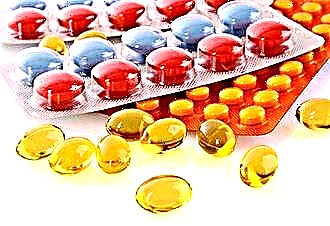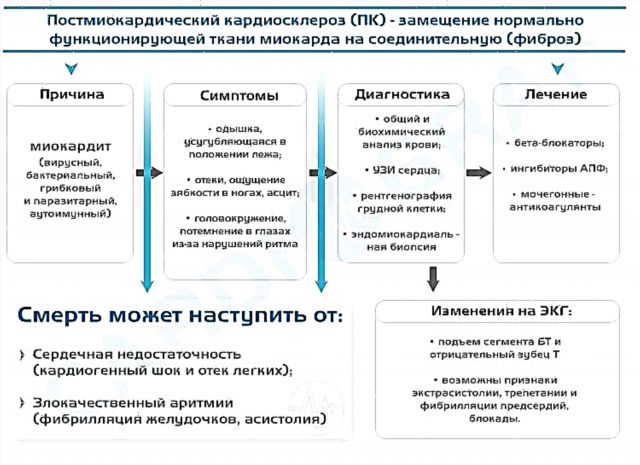Candidal (fungal) tonsillitis is an infectious disease characterized by the defeat of the lymphadenoid pharyngeal ring by pathogens. The causative agent of the infection is a fungus such as Candida or Aspergillus in association with the coccal flora. In preschool children, the clinical manifestations of ENT disease are pronounced, due to the reduced reactivity of the body.
Fungal tonsillitis in children occurs as a result of a decrease in general and local immunity. The provocateurs of pathological changes in the body are: vitamin deficiency, hypothermia, irrational intake of glucocorticosteroids and antibiotics. The pathology itself does not pose a threat to life, however, untimely destruction of fungi can lead to the development of systemic diseases.
Fungal sore throat - what is it?
 According to medical terminology, candidal or fungal sore throat is a fungal infection of lymphadenoid formations, namely the palatine tonsils. However, in the case of the development of pathology, foci of inflammation are localized not only in the glands, but also in the mucous membrane of the oropharynx. Based on this, it is not entirely correct to use the term "fungal sore throat".
According to medical terminology, candidal or fungal sore throat is a fungal infection of lymphadenoid formations, namely the palatine tonsils. However, in the case of the development of pathology, foci of inflammation are localized not only in the glands, but also in the mucous membrane of the oropharynx. Based on this, it is not entirely correct to use the term "fungal sore throat".
There are three subspecies of candidal inflammation of the oropharynx:
- Fungal tonsillitis - damage to the tonsils;
- Pharyngomycosis - damage to the mucous membrane of the pharynx;
- Tonsillopharyngitis is a simultaneous defeat of the pharynx and tonsils.
As a rule, candidal tonsillitis, with untimely treatment, is replaced by pharyngomycosis or tonsillopharyngitis. The principles of treatment of the above pathologies are identical and involve the use of drugs of antifungal (antimycotic) and symptomatic action.
Infectious agents
Oropharyngeal candidiasis is provoked by opportunistic microorganisms, which include yeast-like (Candida albicans) and mold (Aspergillus) fungi. In the case of immunodeficiency, the balance between "useful" and "harmful" microorganisms that make up the microflora of the ENT organs is disturbed. The active development of pathogenic agents leads to the formation of foci of inflammation in the lymphadenoid tissues.
Dysbiosis is a key reason for the decrease in the body's resistance to pathogens. The reasons for the development of a fungal disease in a child can be endogenous and exogenous:
- poor nutrition;
- antibiotic abuse;
- chronic ENT diseases;
- hypovitaminosis and anemia;
- diabetes;
- chronic fatigue;
- taking corticosteroids.
Important! Candidal tonsillitis can cause the development of acute lymphadenitis, which is treated exclusively with antibacterial drugs.
Young children are more susceptible to disease due to reduced immunological reactivity. Infection with pharyngomycosis can be observed in the first months of a child's life upon contact with fungal flora.
Clinical picture
The presence of white plaque on the tonsils is the main sign of the development of candidal tonsillitis. It is possible to accurately diagnose the disease only after passing a serological test and determining the type of infectious agent. Local manifestations of the disease are similar to the symptoms of purulent sore throat, which is treated mainly with antibiotics. However, fungal microorganisms are not sensitive to the effects of antimicrobial agents. Untimely administration of antimycotic drugs can lead to complications.
Fungal sore throat is characterized by weak intoxication of the body, therefore, the general symptoms of the disease are poorly expressed. These include:
- minor headaches;
- discomfort in the throat;
- weakness and drowsiness;
- subfebrile fever.
At the stage of acute candidal inflammation in the oropharynx, multiple white spots appear, which are localized on the palatine arches, tonsils, tongue of the soft palate, pharynx, etc. After mechanical removal of plaque on the mucous membrane, bleeding ulcers appear, which provoke tissue edema. In places where the mucous membrane is most affected, detachment of the epithelium is observed.
Important! White bloom signals the development of yeast-like, and green or yellowish - molds.
In children, treatment of candidal tonsillitis should be started when the first symptoms of the disease appear. Delayed therapy can cause the formation of white plaque on the tongue, the inner surface of the cheeks, the walls of the throat, etc.
The specificity of the course of the disease
Candidal inflammation of the oropharynx can occur in several forms, which should be taken into account when making a diagnosis. Acute pharyngomycosis is often confused with purulent sore throat due to the similarity of clinical manifestations: sore throat, headaches, hyperthermia, enlargement of regional lymph nodes.
The subacute form of the disease is almost asymptomatic, which prevents the diagnosis and treatment of pharyngomycosis in children under 1 year of age. Untimely destruction of fungal pathogens leads to chronic inflammation. Chronic candidal tonsillitis practically does not manifest itself, but about 2-3 times a year, exacerbations may occur, characterized by typical manifestations of pharyngomycosis.
Inflammatory processes in the body will continue until etiotropic treatment is carried out.
If candidal inflammation is not treated, this will lead to the progression of the fungal flora and the formation of curdled plaque on the entire surface of the tongue. Pathological processes can cause changes in taste and the development of candidal stomatitis.
Differential diagnosis
In most cases, candidal inflammation of the mucous membranes can be diagnosed by visual examination of the throat. Due to the fact that lymphadenoid tissue in infants has a loose structure, curdled plaque differs little from purulent formations. Therefore, it is possible to accurately determine the type of disease only after microbiological  pharyngeal smear studies.
pharyngeal smear studies.
When determining the causes of the development of the disease, the presence of somatic diseases, secondary immunodeficiencies, as well as adverse reactions to the intake of glucocorticosteroid drugs are taken into account. A biochemical blood test allows you to determine the concentration of bacteria in the plasma. The absence of an excessive amount of microbes in the body is one of the strongest evidences for the presence of candidal inflammation.
Differential diagnosis of pharyngomycosis is carried out with such pathologies as:
- streptococcal tonsillitis;
- scarlet fever;
- syphilis;
- herpes stomatitis;
- bacterial mononucleosis.
In the presence of mixed flora in the foci of inflammation, the specialist conducts the Femoflor-Screen test, which makes it possible to determine the causative agent of the infection with 100% probability.
Treatment principles
What should be the treatment for fungal sore throat in children? Since candidal tonsillitis and pharyngomycosis occur against the background of dysbiosis, therapy begins with the restoration of normal microflora. If the pathology has developed as a result of irrational intake of antibiotics, the treatment regimen is adjusted by replacing antimicrobial drugs with antimycotics.
To increase the number of lactobacilli in the small intestine, the patient is prescribed a special diet with an emphasis on fermented milk products, fruits, fresh vegetables and protein foods. Complex drug therapy consists in the use of the following medications:
- antimycotics - inhibit the activity of yeast-like and mold fungi;
- antiseptics (irrigation, inhalation, lubrication) - disinfect the mucous membrane of the oropharynx;
- immunostimulants - increase the body's nonspecific resistance;
- vitamins - make up for the deficiency in the body
 useful substances that take part in important biochemical processes;
useful substances that take part in important biochemical processes; - antipyretics - lower the temperature, thereby eliminating subfebrile fever.
At the stage of regression of pathological processes, a specialist can prescribe physiotherapy procedures. Irradiation of lymphadenoid formations with ultraviolet light helps to destroy the bacterial and fungal flora, thereby increasing local immunity.
Antimycotic therapy
Antifungal drugs have a pronounced fungistatic and fungicidal effect against yeast-like and mold fungi. Their active components inhibit the biosynthesis of cytochrome, which prevents the formation of cell membranes of pathogens. Systemic medications prevent the spread of candidal inflammation, which speeds up the healing process.
In pediatric therapy for the treatment of pharyngomycosis, the following antimycotics are used:
- "Fluconazole" - a drug with fungistatic action; suppresses the production of fungal sterols, which prevents the further development of pathogens;
- "Levorin" is a low-toxic agent that destroys yeast-like fungus and protozoa such as Trichomonas vaginalis; the components of the drug do not accumulate in the body, which prevents the occurrence of side reactions;
- "Nystatin" - antimycotic fungicidal action, destroying aspergillus, yeast-like fungi and protozoa; It is used to eliminate candidal inflammation not only in the oral cavity, but also in the gastrointestinal tract.
Medication abuse can trigger vomiting, diarrhea, chills, and abdominal pain.
It is possible to stop the manifestations of candidal tonsillitis only in the case of undergoing etiotropic therapy. Symptomatic drugs only facilitate the course of the disease, but do not destroy the cause of its occurrence - the fungal flora.
Local treatment
Candidal tonsillitis is easily treatable only at an early stage of the development of pathology.
In the case of late diagnosis and incorrect previous treatment, the fungal flora is often  pathogenic bacteria join. To eliminate foci of inflammation in the lymphadenoid formations, topical preparations are used.
pathogenic bacteria join. To eliminate foci of inflammation in the lymphadenoid formations, topical preparations are used.
How is fungal tonsillitis eliminated in children - what are the symptoms and treatment of the child? Local therapy consists of irrigating the throat with agents that have antimycotic and antimicrobial properties. Medicines are prescribed only by the attending physician after an accurate diagnosis. Safe antiseptics that can be used to debride the oropharynx include:
- "Faringosept" - prevents the development of bacterial flora, which helps to eliminate the general symptoms of intoxication;
- "Chlorhexidine" - destroys aerobic and anaerobic bacteria, as well as parasitic fungi of the genus Candida;
- "Iodinol" - disinfects the mucous membrane of the oropharynx, thereby increasing tissue reactivity;
- "Decamethoxin" - destroys microbes and pathogenic fungi, therefore it can be used to treat pharyngomycosis, fungal stomatitis and purulent inflammation in the ENT organs;
- "Miramistin" - eliminates most strains of bacteria resistant to the effects of drugs of the penicillin group; has activity against aspergillus, saprophytes and yeast-like fungi.
To accelerate the regression of candidal inflammation, throat sanitation should be performed at least 4-5 times a day for a week. Some of the above drugs, in particular Miramistin and Chlorhexidine, can be used to prevent fungal infections. Their active components stimulate a nonspecific immune response, which prevents the development of opportunistic microorganisms.
Effective immunostimulants
Immunostimulants are drugs that increase nonspecific immunity. The systematic use of drugs prevents the development of infectious ENT diseases in children. As prescribed by the pediatrician, they are used on the eve of seasonal diseases such as tonsillitis, acute respiratory viral infections, influenza, bronchitis, etc.
For preventive purposes, plant-based preparations are used to increase the reactivity of the child's body.  They practically do not cause allergic reactions, but at the same time they stimulate the production of interferon in the body. Biogenic agents, which include vitamins and microelements, are called adaptogens. They prevent the development of hypovitaminosis, which is one of the key factors in reducing the body's resistance.
They practically do not cause allergic reactions, but at the same time they stimulate the production of interferon in the body. Biogenic agents, which include vitamins and microelements, are called adaptogens. They prevent the development of hypovitaminosis, which is one of the key factors in reducing the body's resistance.
Effective immunostimulants include:
- "Amiksin";
- Derinat;
- "Immunal";
- Milife;
- Ribomunil;
- Betaferon.
The above means are recommended to be used at the stage of resolving candidal inflammation in the throat mucosa. The systematic use of immunostimulants prevents the chronicization of pathological processes and relapses of the disease.

 useful substances that take part in important biochemical processes;
useful substances that take part in important biochemical processes;

